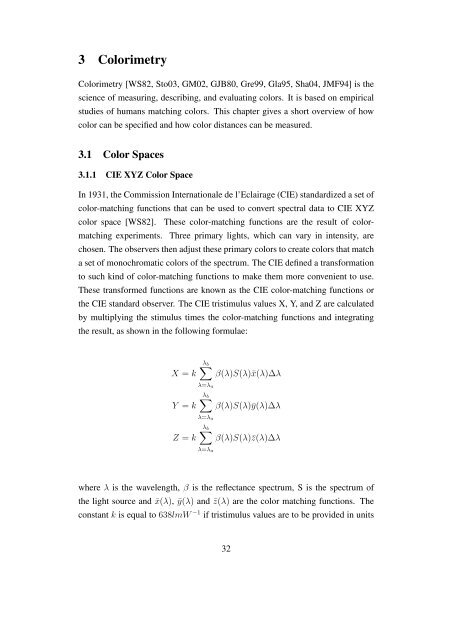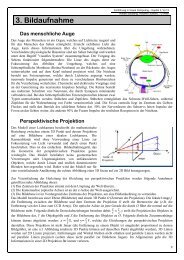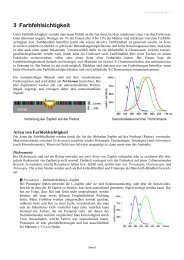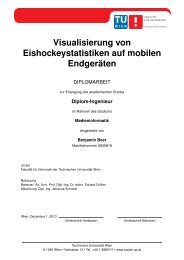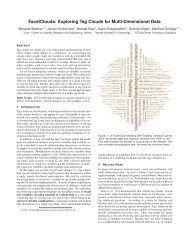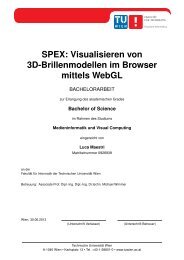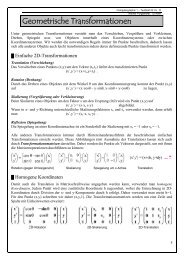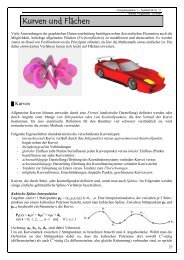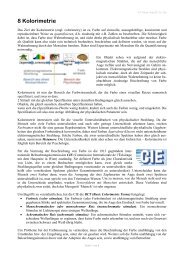Usability of Digital Cameras for Verifying Physically Based ...
Usability of Digital Cameras for Verifying Physically Based ...
Usability of Digital Cameras for Verifying Physically Based ...
Create successful ePaper yourself
Turn your PDF publications into a flip-book with our unique Google optimized e-Paper software.
3 Colorimetry<br />
Colorimetry [WS82, Sto03, GM02, GJB80, Gre99, Gla95, Sha04, JMF94] is the<br />
science <strong>of</strong> measuring, describing, and evaluating colors. It is based on empirical<br />
studies <strong>of</strong> humans matching colors. This chapter gives a short overview <strong>of</strong> how<br />
color can be specified and how color distances can be measured.<br />
3.1 Color Spaces<br />
3.1.1 CIE XYZ Color Space<br />
In 1931, the Commission Internationale de l’Eclairage (CIE) standardized a set <strong>of</strong><br />
color-matching functions that can be used to convert spectral data to CIE XYZ<br />
color space [WS82]. These color-matching functions are the result <strong>of</strong> color-<br />
matching experiments. Three primary lights, which can vary in intensity, are<br />
chosen. The observers then adjust these primary colors to create colors that match<br />
a set <strong>of</strong> monochromatic colors <strong>of</strong> the spectrum. The CIE defined a trans<strong>for</strong>mation<br />
to such kind <strong>of</strong> color-matching functions to make them more convenient to use.<br />
These trans<strong>for</strong>med functions are known as the CIE color-matching functions or<br />
the CIE standard observer. The CIE tristimulus values X, Y, and Z are calculated<br />
by multiplying the stimulus times the color-matching functions and integrating<br />
the result, as shown in the following <strong>for</strong>mulae:<br />
X = k<br />
Y = k<br />
Z = k<br />
λb �<br />
λ=λa<br />
λb �<br />
λ=λa<br />
λb �<br />
λ=λa<br />
β(λ)S(λ)¯x(λ)∆λ<br />
β(λ)S(λ)¯y(λ)∆λ<br />
β(λ)S(λ)¯z(λ)∆λ<br />
where λ is the wavelength, β is the reflectance spectrum, S is the spectrum <strong>of</strong><br />
the light source and ¯x(λ), ¯y(λ) and ¯z(λ) are the color matching functions. The<br />
constant k is equal to 638lmW −1 if tristimulus values are to be provided in units<br />
32


